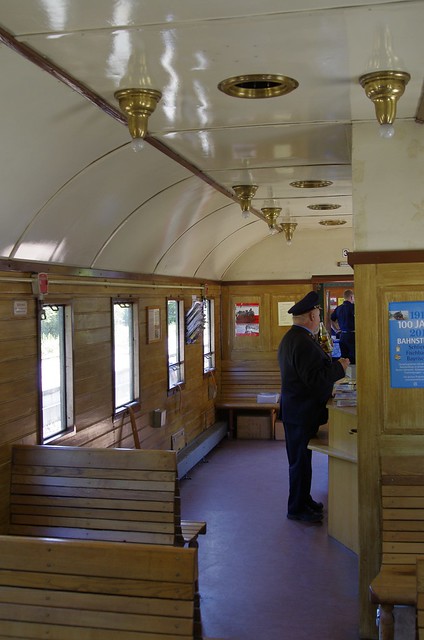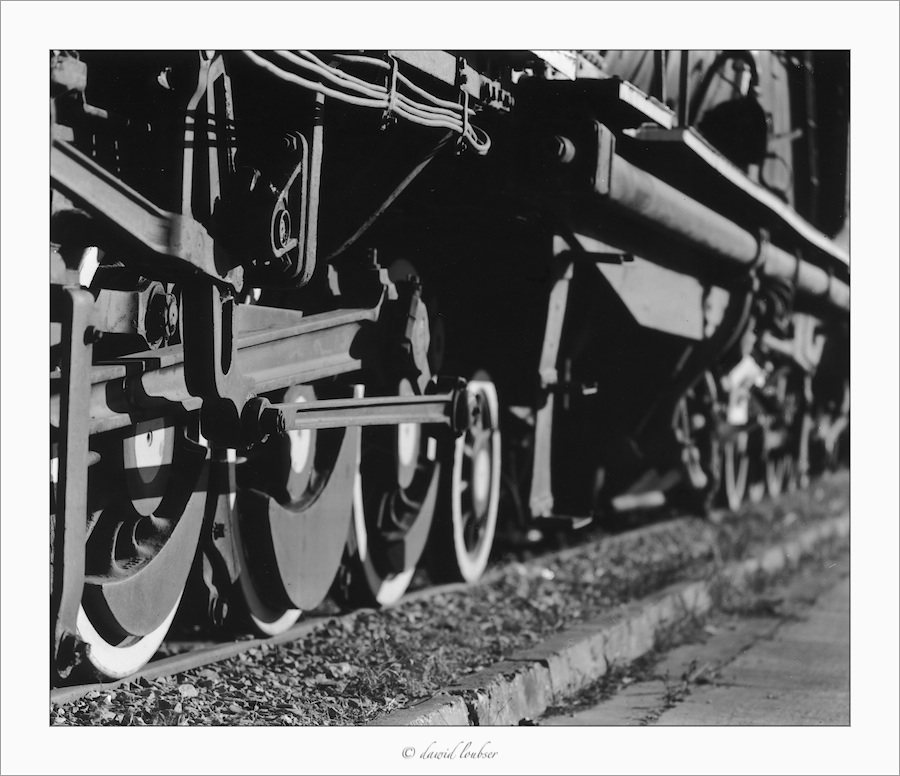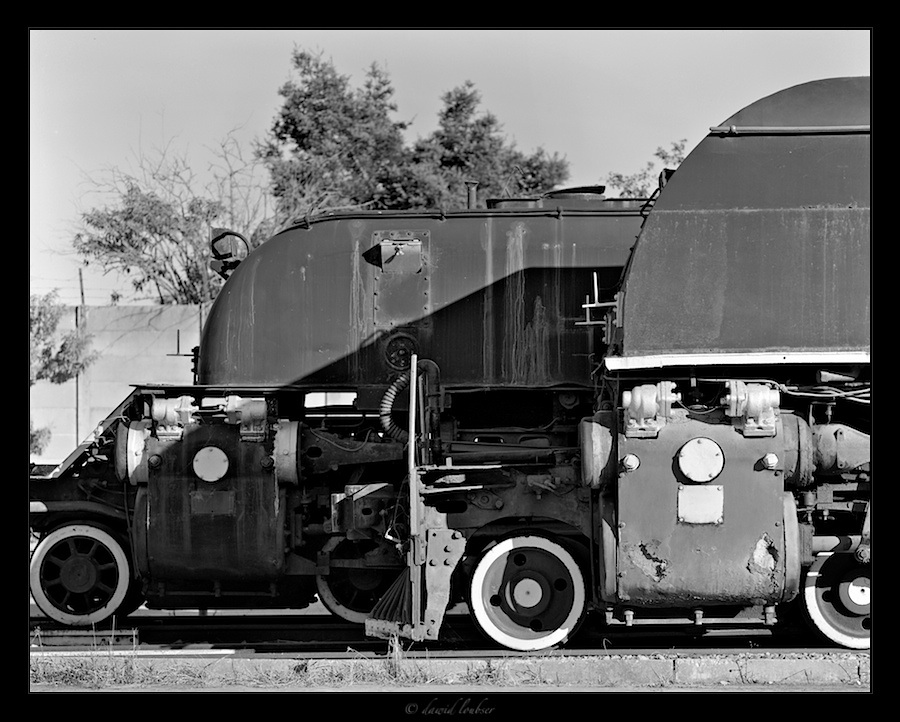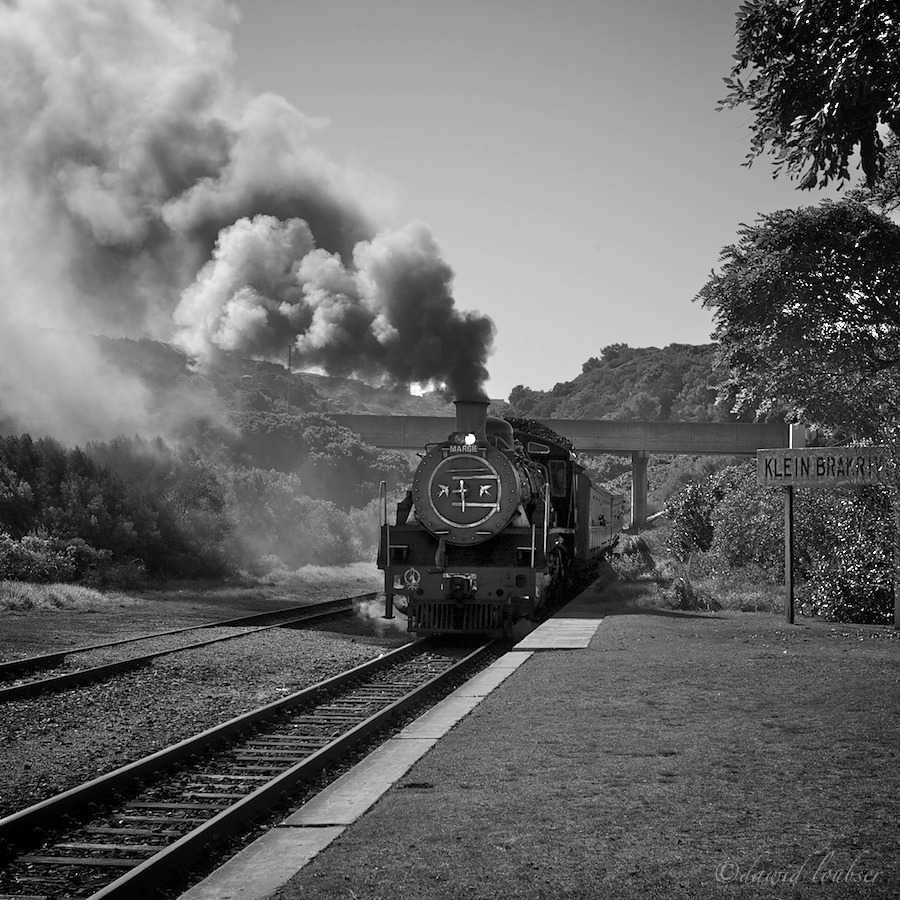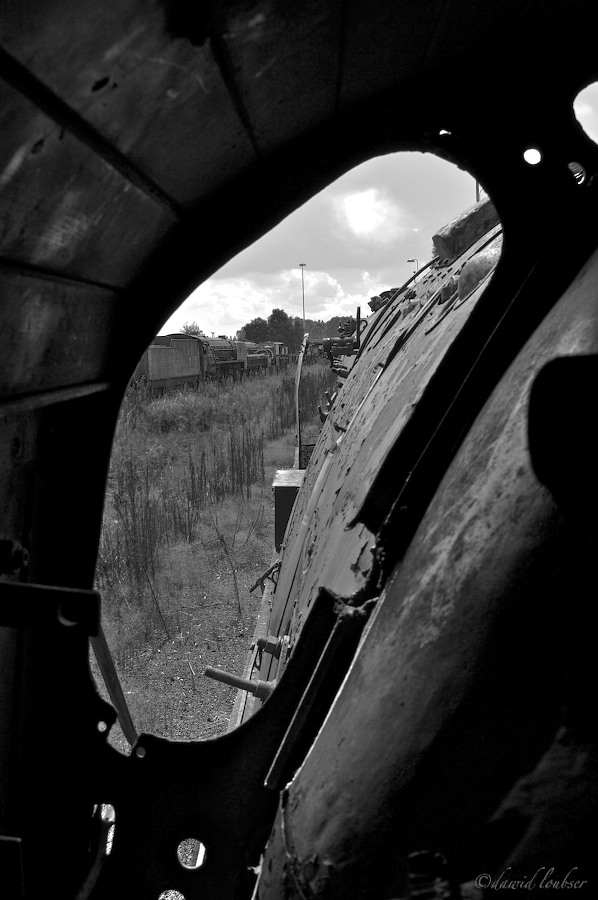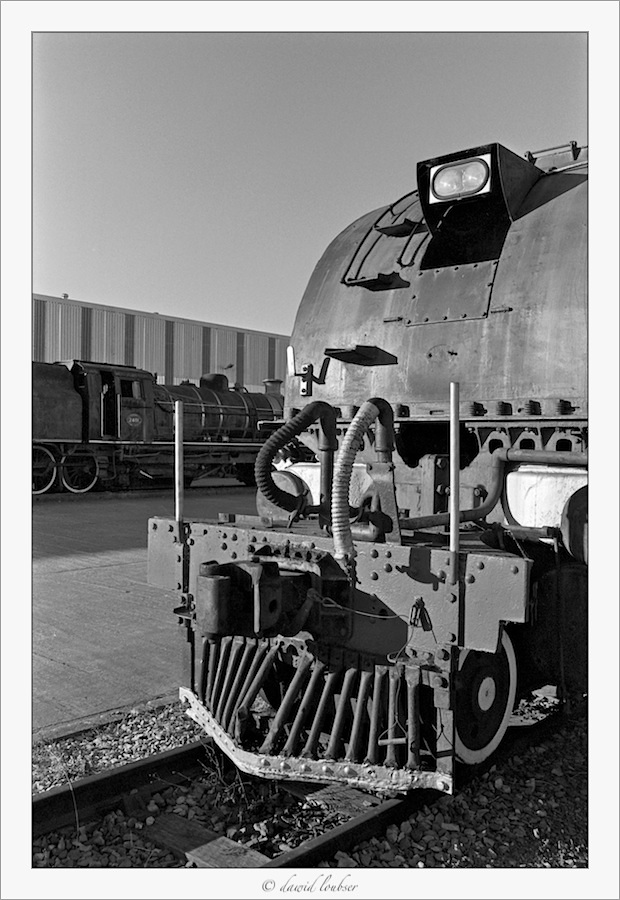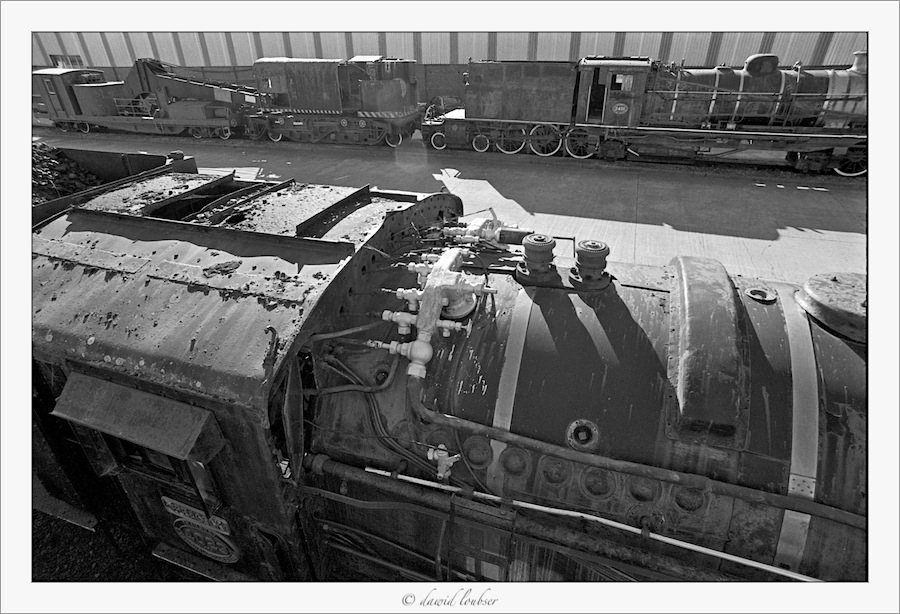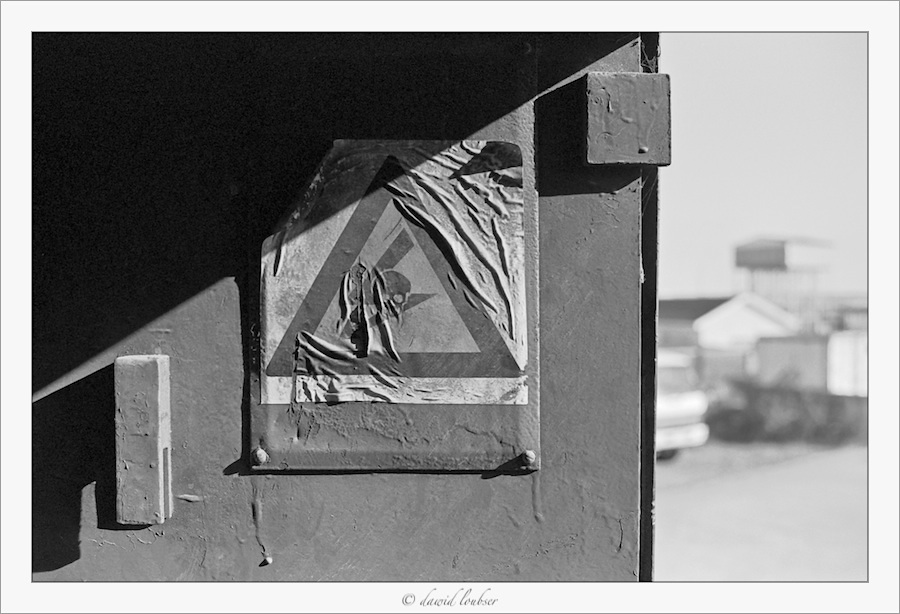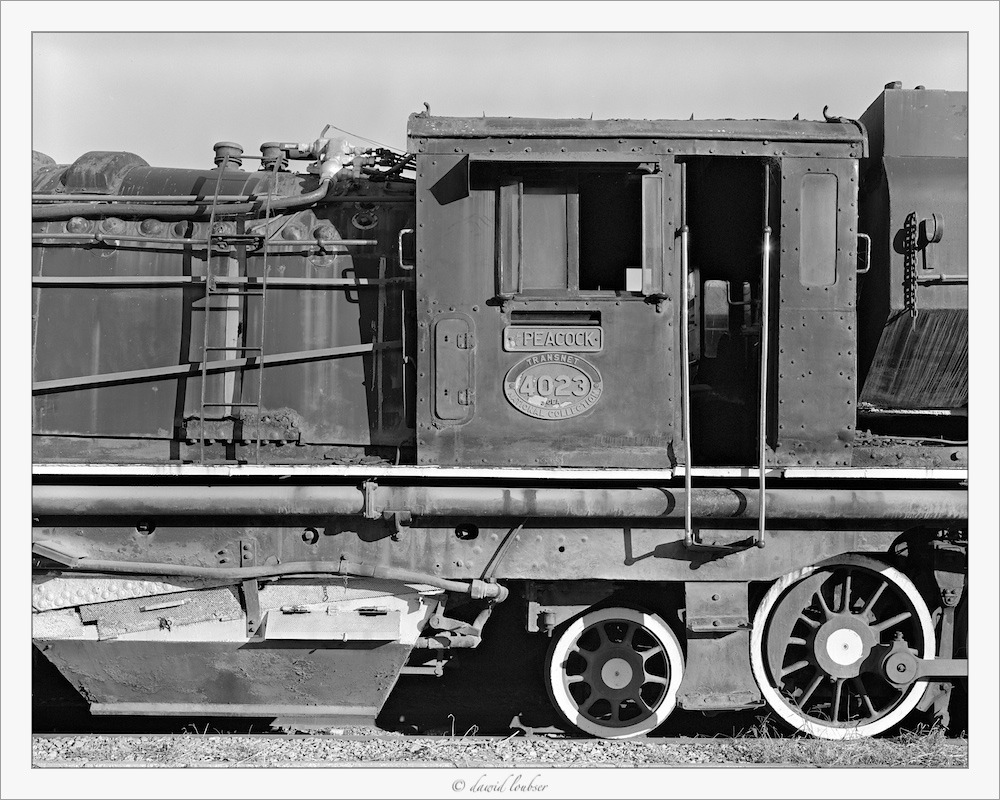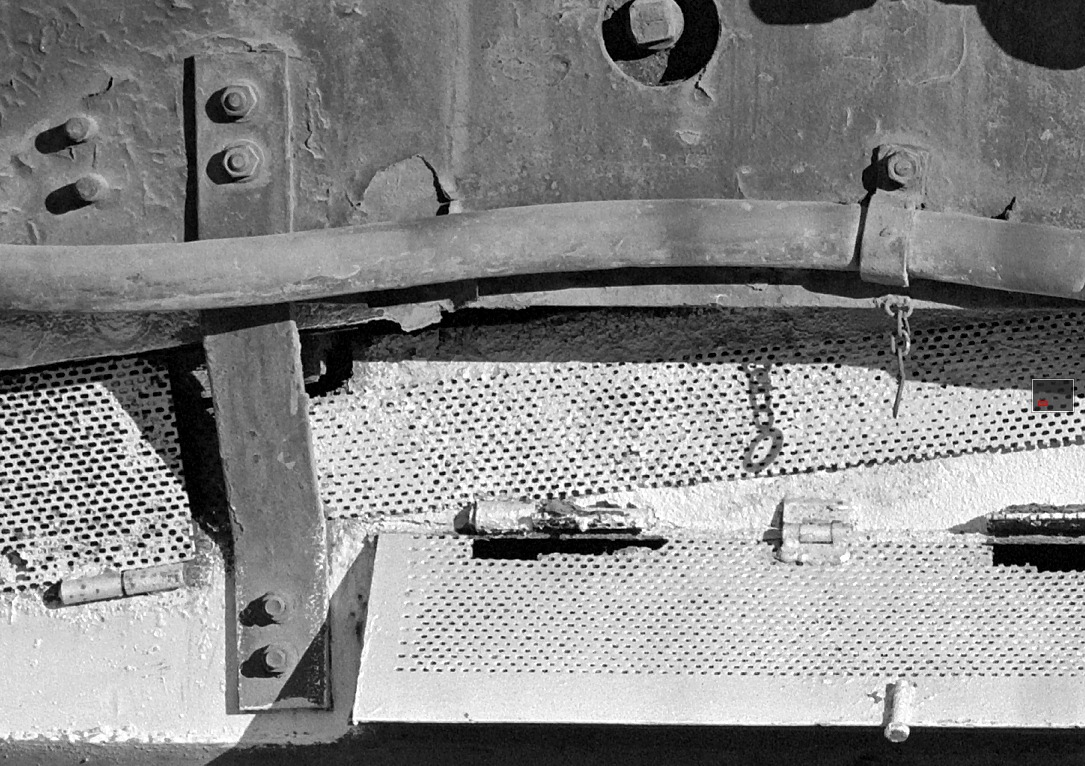Asher Kelman
OPF Owner/Editor-in-Chief
This was taken with a 1DII and handheld sequential shot, quick-stitched on a trial version of AutoPano Pro software. This is a reduction to 1500 pixels wide of a 417 MB 16BIT file 8500 pixels wide.
Just S curve and sharpened. Not cleaned up of the signs and no sky added!

© 2007 Asher Kelman AT&SF Class 870 Consolidation (2-8-0) Heritage Park, Santa Fe Springs, CA
This train will be posted again in other reincarnations, for sure.
The stitching was surpisingly easy!
50 1.2L and the aperture was f 7.0, Speed, 1/85sec. ISO 320. This was just a 10 second 12 grab shots.
My first stitch with this software and it was fun!
The software is found here .
Asher
Just S curve and sharpened. Not cleaned up of the signs and no sky added!

© 2007 Asher Kelman AT&SF Class 870 Consolidation (2-8-0) Heritage Park, Santa Fe Springs, CA
This train will be posted again in other reincarnations, for sure.
The stitching was surpisingly easy!
50 1.2L and the aperture was f 7.0, Speed, 1/85sec. ISO 320. This was just a 10 second 12 grab shots.
My first stitch with this software and it was fun!
The software is found here .
Asher
Last edited:










